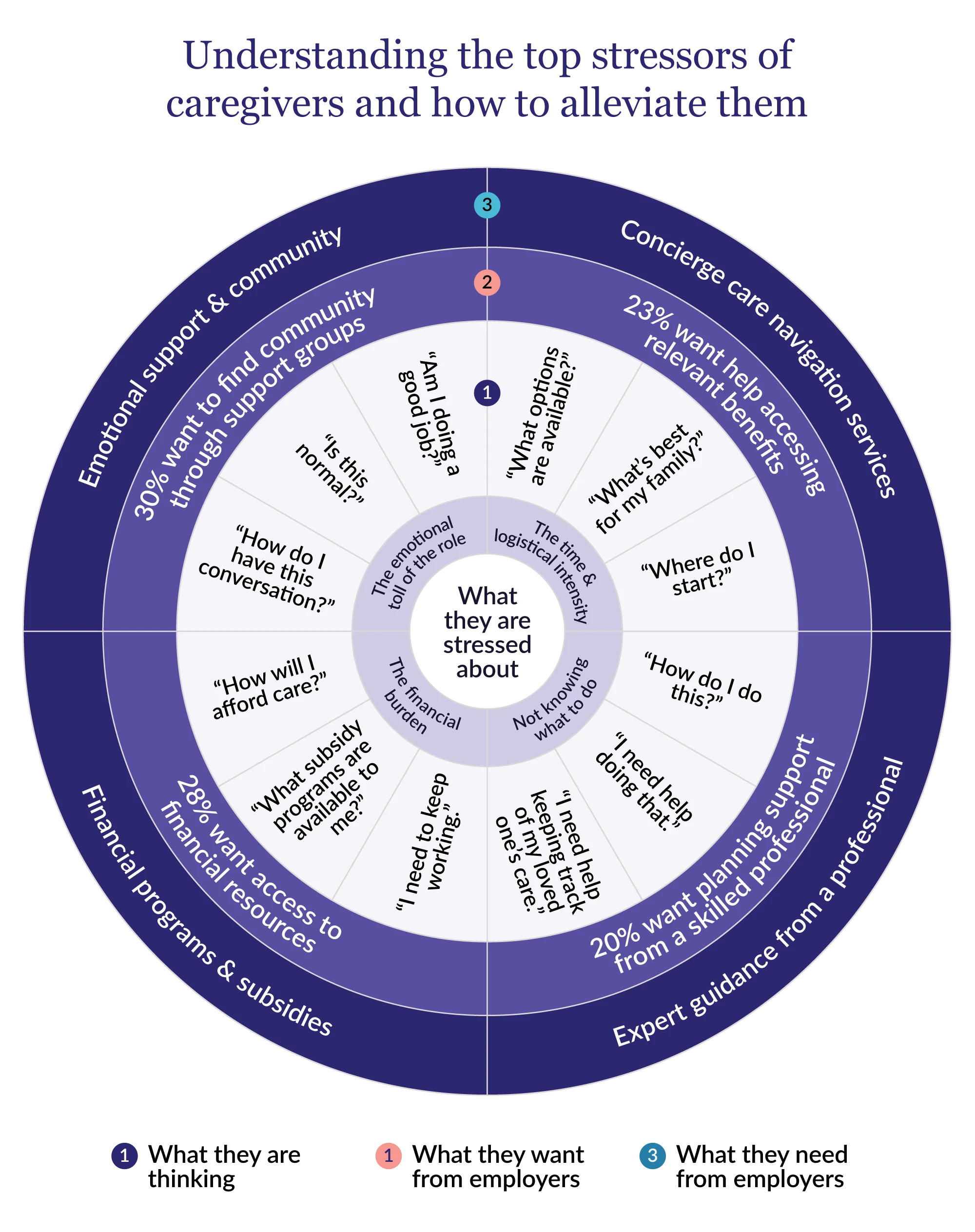How to Build an Equitable Work Culture
Build a work culture that is both productive and equitable through family care support.
Make your workplace culture more productive by supporting employees in ways that demonstrate an understanding of their needs.

$500 Billion.
Five hundred billion dollars.
That’s how much money the American Psychological Association estimates is siphoned out of our economy in lost productivity due to employee stress and anxiety. We can share countless similar stats as well. 550 million workdays are lost each year due to mental health impacts, and that 80% of doctor’s visits can be linked back to employee anxiety.
We could go on, but the point is this: Workplace culture–positive or negative– impacts every aspect of business.
Stress and anxiety may be part of employees’ lives, but that doesn’t mean they have to be a sunk cost for your business. There are solutions! In our employer’s guide to family caregiving, we reported that when an organization invests in creating an understanding culture, employee stress and anxiety decrease, and productivity improves.
With this in mind, we have concluded that by addressing the stress and anxiety that employees face, companies create an understanding culture. Companies with understanding cultures are those that have high rates of employee retention and productivity and, conversely, low rates of absenteeism and turnover. We know that you want to reduce the $500 billion impact of employee stress, so we put together a quick how-to with simple and effective ways to improve your work culture.
Creating an understanding culture starts with…understanding.
When your organization understands the factors causing mental health impacts for your employees, it can better alleviate this stress. While the expected culprits like heavy workloads, unclear job expectations, and job insecurity definitely contribute to this stress, one stressor that stands out to us is family care.
Did you know that more than 70% of employee caregivers struggle to balance family and career? These employees spend an average of 26 hours a week outside of work caring for others, leaving them overwhelmed and overburdened. More than a quarter of our workforce serves as a caregiver, so caregiving stress likely infiltrates every department in your company, influences every aspect of your business, and ultimately, impacts every employee who works for you.

Family care is among the most commonly reported stressors for employees. Concerns about the financial and time-related burdens caring for family, the emotional toll of caregiving, and their preparedness for the role cause undue anxiety and stress for many employees.
This isn’t surprising. Consider these scenarios:
Each of these scenarios is inherently stressful–and it’s likely that you or someone you know has navigated something similar. By pre-emptively putting solutions in place to address stressors like these, you not only create an understanding work culture, but you also put guardrails in place to protect against absenteeism, turnover, and lost productivity.

Source: Grayce Employer Guide
With this in mind, your employees need tools to address the things that cause stress in their lives, and employers see a boost in productivity when they provide those resources.
At Grayce, we are laser-focused on addressing the employee stress and anxiety related to family care. We built our holistic family care platform to address stressors like finding care resources, navigating difficult diagnoses, and work-life balance. We work to understand the entire workforce’s big-picture needs, then each employee’s individual needs, and then to address these needs with resources and support.
Ellen Meza, Senior Director of Global Benefits, Well-Being, and Mobility at Docusign, told us, “After examining employee engagement surveys and conversing with ERGs, we discovered employees were struggling with caring for aging, ill, or vulnerable loved ones. It was clear that we needed to support our employees in ways we hadn’t before.”
Ellen and many other Grayce partners have found that family care solutions built on a social care model are key to creating a supportive environment for employees balancing responsibilities at work and home. Grayce data speaks for itself.

The fact is that when the causes of employee stress are addressed and mitigated, productivity increases. That’s why it’s no surprise that 3 out of every 4 Grayce members reported improved mental health. When their stress was addressed, they felt better!
As we said before, there is a direct correlation between understanding and a productive workplace culture. The more effort employers put into uncovering the causes of employee stress and anxiety, the more productive those employees are at work.
It’s why we do what we do at Grayce.
We want the businesses we partner with to succeed—which means we want their employees to succeed. As workplace stress is increasing, we’re getting innovative with benefits solutions to address it.
If you would like to learn more about the relationship between understanding and productivity or about the innovative benefits solutions, we invite you to download our “Employer Guide”, where you can get in-depth information– and data– on this topic.

Sign up to receive the latest resources and updates from Grayce.